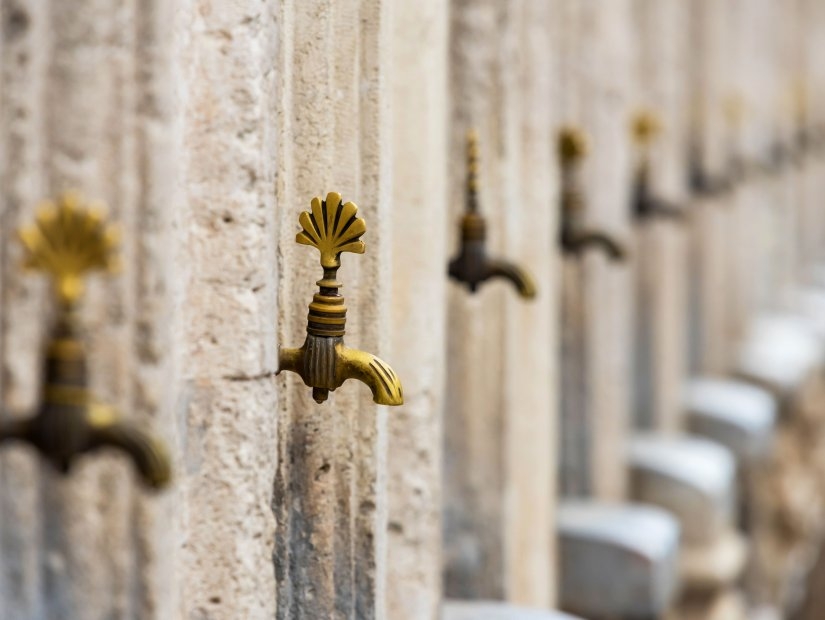Blog
Fountains in Istanbul
Fountains in Istanbul
Fountains and the inscriptions of these fountains constitute a vital part of the city culture in Istanbul. The emergence of fountains, which are historical and cultural treasures, dates back to the early periods of Islam. Because Islam attaches importance to water, in other words, meeting the basic needs of people. With their original architecture and decorations, fountains are among the outstanding examples of architecture in Istanbul. We have listed the fountains that you may encounter while walking through Istanbul's streets full of history.
Sultanahmet Square Fountain
Sultanahmet Square Fountain, located in the small square in front of the Bab-ı Hümayun, the main gate of Topkapı Palace, was built in 1728-1729 by Ahmed III's order.
The fountain has a square structure, and it covers an area of 100 square meters. There is a faucet on each face of the square and a motif on each corner. Its height is 7.50 m up to the eaves and 11 meters up to the rooftop. The fountain, which is one of the most famous monuments of the Tulip Period, has the characteristics of an independent structure. The ode of Seyyid Vehbi, the famous divan poet of this period, consisting of 28 couplets, is engraved on the marble.
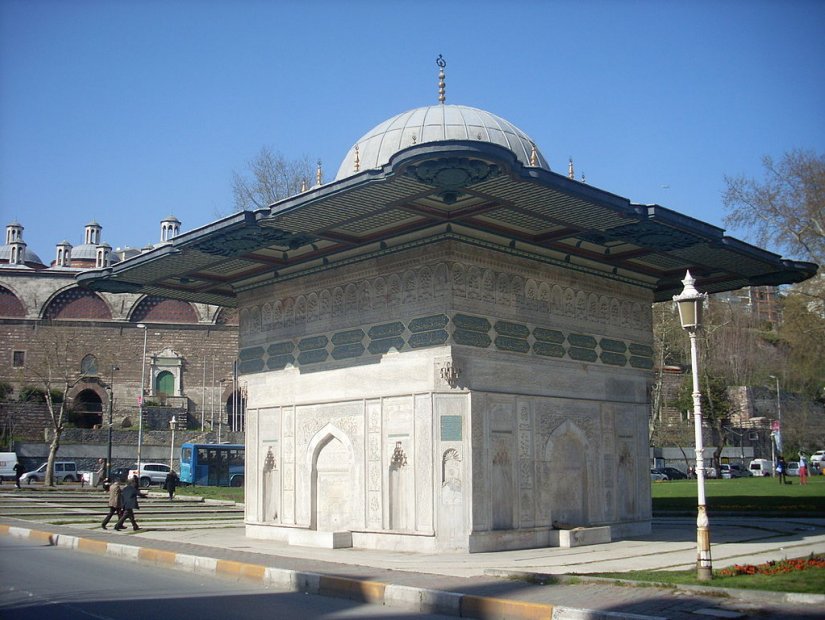
Tophane Fountain
Tophane Fountain is a square fountain, built in 1732 by order of Mahmut I. The fountain located in Tophane Square is the third largest fountain in the city and is the tallest walled fountain in the city. The inscription on the fountain belongs to the poet Nafihi. According to the engravings, it was a fountain with wide eaves, a dome, and eight taps when it was first built. The fountain was decorated with plant motifs according to the aesthetic understanding of the period it was made. There are fruit trees and flowers in the stone decoration. These motifs are arranged in a sequence towards rectangular frames, edges, and into the niche.
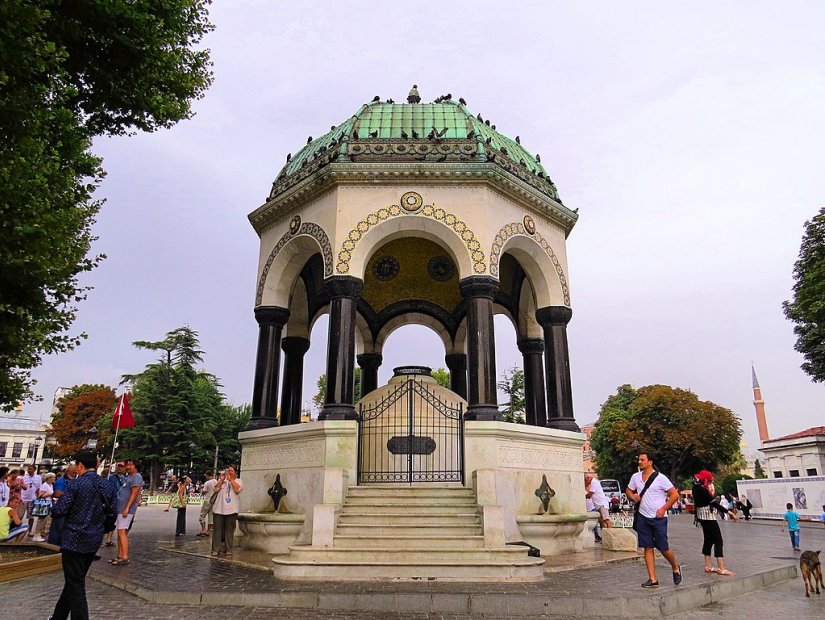
German Fountain
The German Fountain is located at the northern end of Sultanahmet Square and has a new and different style compared to other historical monuments around it. It was made as a memory of German Emperor Wilhelm II's second visit to Istanbul on November 19, 1898. German Architect Carlitzik, Architect Mark Spitta, Special Consultant of Kayser, Italian Architect Joseph Antony and Schoele worked on the project. All parts of the fountain were prepared in Germany and brought to Istanbul in pieces. The Neo-Byzantine style fountain is decorated with gold mosaics from the inside.
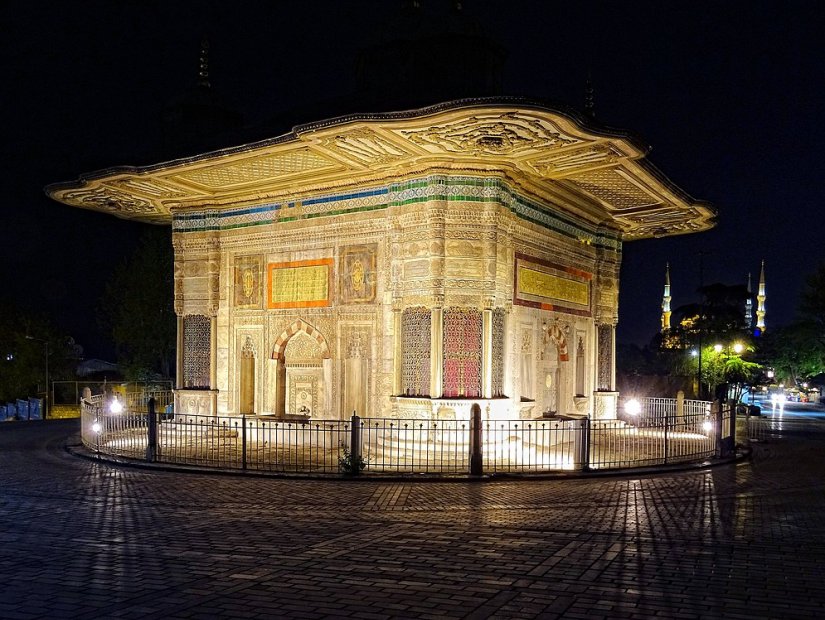
Fountain of Ahmed III (Sultanahmet)
III. Ahmet Fountain was built between Topkapı Palace and Hagia Sophia's entrance gate in 1728 by order of Ahmet III. The ornaments of stone and bronze craftsmanship and wooden eaves on the four sides of the fountain are of great artistic significance. Unlike the modest lines of the classical period, this fountain stands out among its peers with the elegance, richness, and beauty of its details.
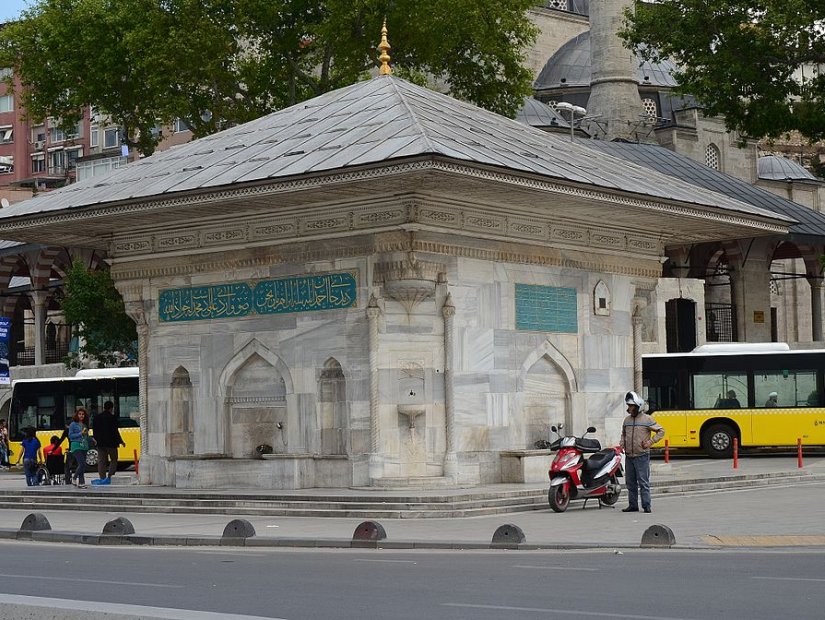
Fountain of Ahmed III (Uskudar)
This monumental square fountain, one of the symbolic works of Uskudar, was built between 1728-29 by the architect Kayserili Mehmed Ağa, on the order of Sultan Ahmed III, in memory of his mother. On the fountain, which is a magnificent structure with its decorations, there are couplets of the important poets of the period. There is a fountain niche with pointed arches in the middle on each face of the fountain, which has a square shape with chamfered corners. However, there is another niche on both sides of the seaside in the form of a mihrab. There are an average human-height faucet and protruding troughs on the corner bevels with twisted columns on both sides.


